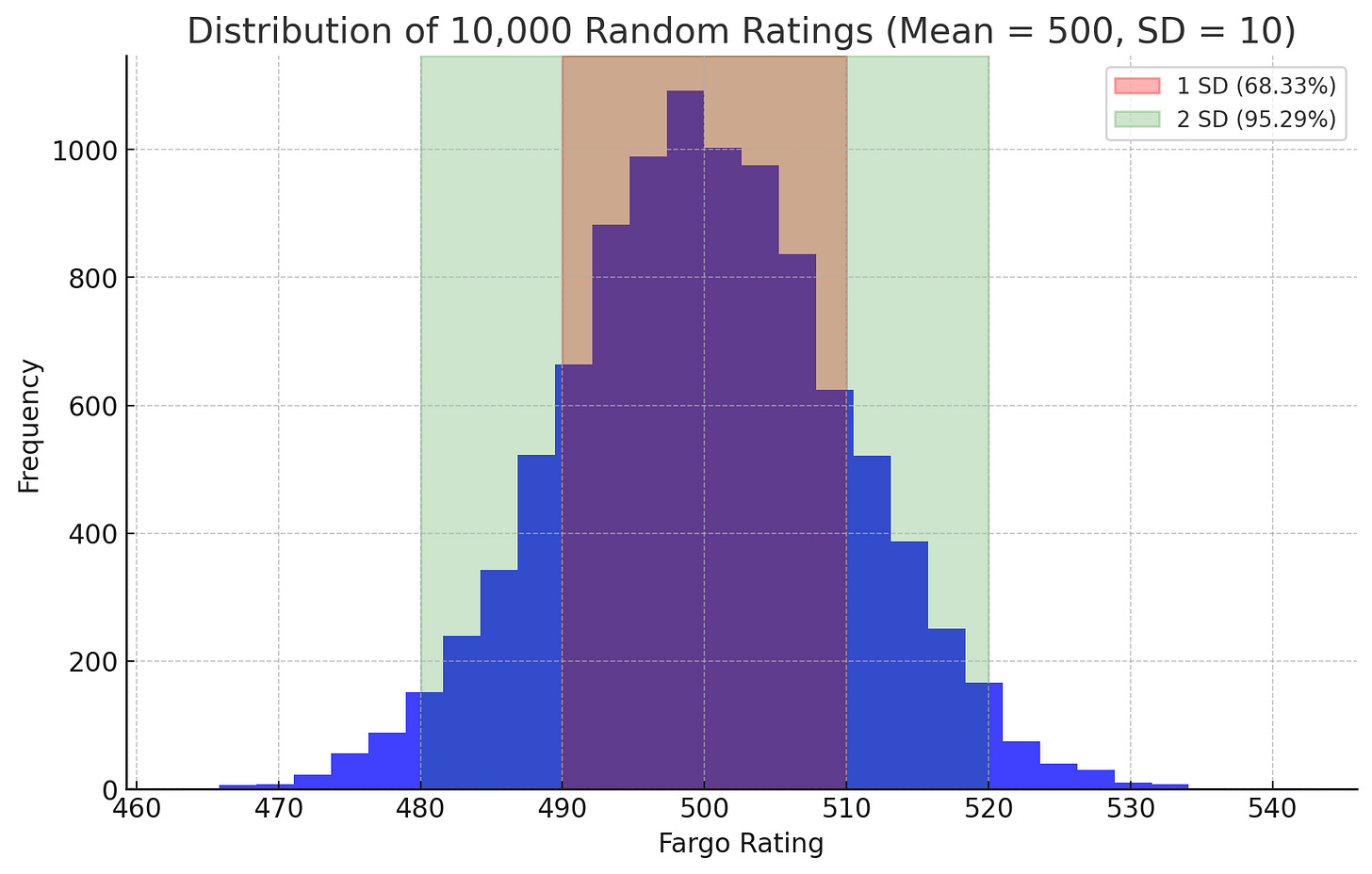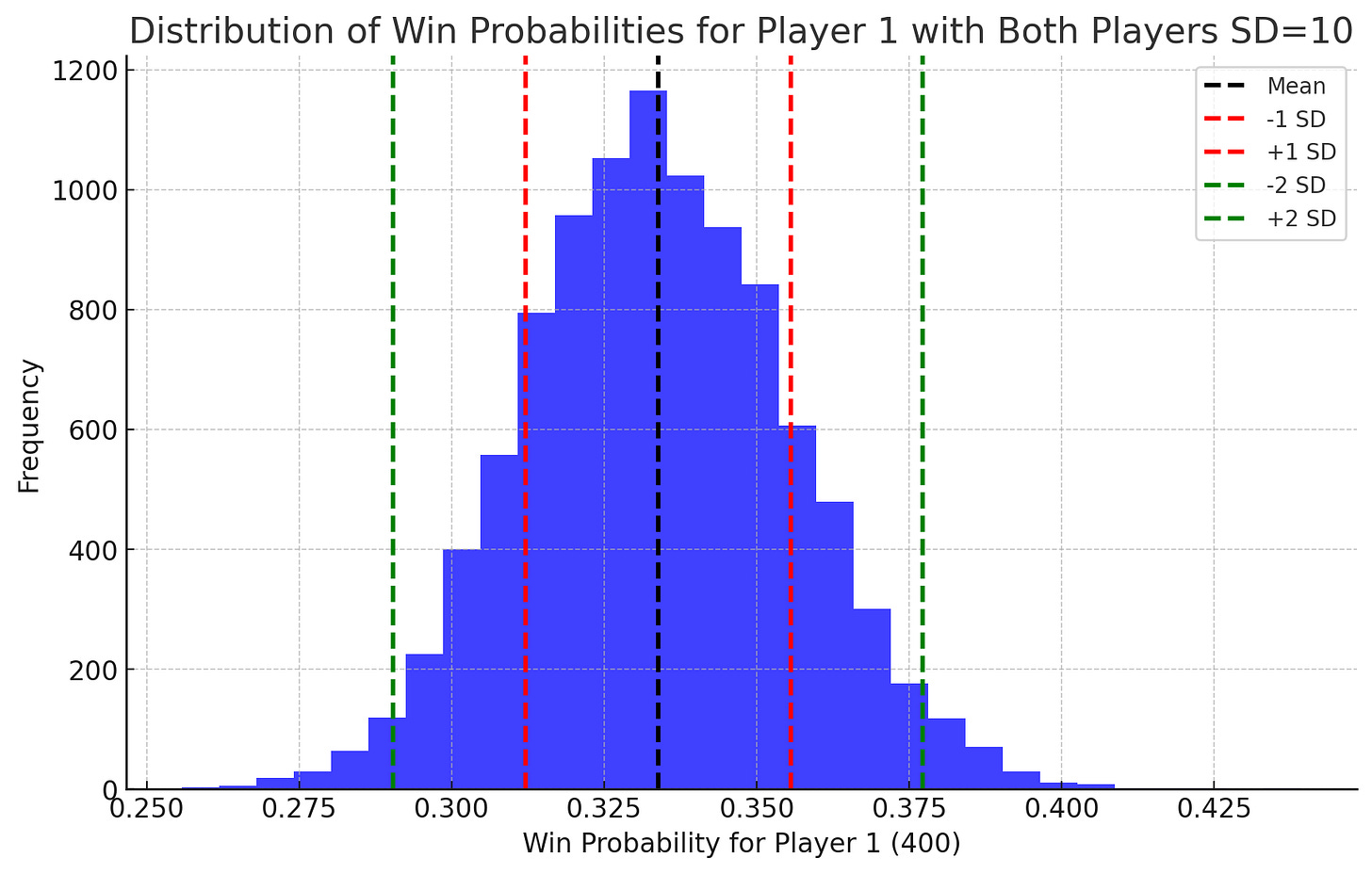World-class pool players with Fargo Ratings above 800 are, by definition, very different from you and me. One thing that sets them apart is their ability to focus on the game for extremely long periods of time.
One thing I’ve noticed playing Fargo-based races is that the unlikely outcomes seem to happen more often than I’d expect. When a 400 plays a 500, Fargo tells me the 500 should win about 67% of the time. But it doesn’t feel that way. I see the 250 ranked player beating the 550 player much more often than I feel like I should. (Which is around 11% of the time.) What’s going on?
I think Fargo Ratings ignore the fact that our games, at least at the amateur level have a lot of standard deviation in them.
How often do you have an “off” night? Hard day at work? Injury? Drinking before or during the match? Rowdy neighbors at the adjacent table? Just tired from last night’s league? Maybe multiple things are happening at once?
Consider the idea that your Fargo rating might have a standard deviation of 10 or more points.
For example, a player with a Fargo rating of 500 and a standard deviation of 10 has the following odds of performance:
68% of the time, the player can expect to perform at 490 to 510. That also means that about ⅓ of the time, that player plays outside of 490 to 510. About 13 percent of the time, the player will be playing at the 480 to 490 range. 2.3 percent of the time, the player should expect to play less than 480 Fargo. That’s also true for 520+.
Now consider the opponent has exactly the same thing going on. It may or may not be independent of your performance too. In other words, the thing that’s causing you to play 20+ points below your Fargo tonight may not effect your opponent at all. The opponent might happen to be 20 points higher than average. That’s going to make for a bad night. And, as we all know, bad nights happen.
Fargo Difference of 100 Points, but with SD of 10 for Both
Let’s say you’re playing a player with a Fargo 100 points higher than you. Fargo predicts you’ll win only 33% of the time. But when you consider both of you have a standard deviation of 10 points, the actual win percentage is a random variable picked from this distribution:
Depending on factors you may have trouble identifying, your likelihood of winning realistically ranges from about 29% to about 38%. Keep in mind, 10 Fargo points of standard deviation is merely a guess. It’s almost certainly player dependent and highly dynamic. Do you get angry after a miss? Did you have a negative inner dialog after you rattled the money ball? Guess what that’s probably doing? Did you just sink a 8 foot clutch ball and get position? Hmm…
Learning to be aware of the things that distract us is hard. Learning to perform despite them is harder. It’s very likely driving those ‘rare’ but not so rare outcomes we see.





